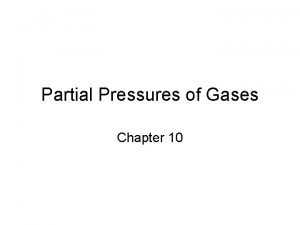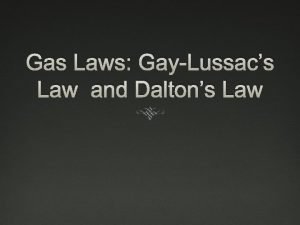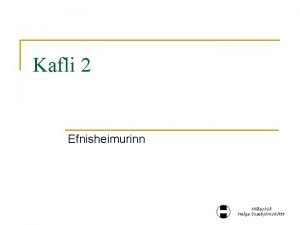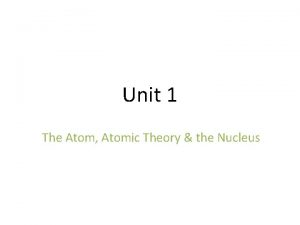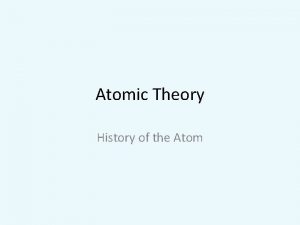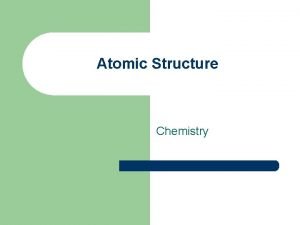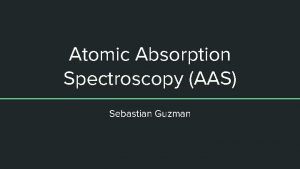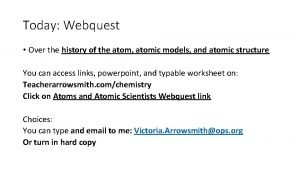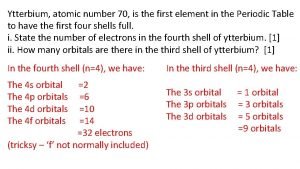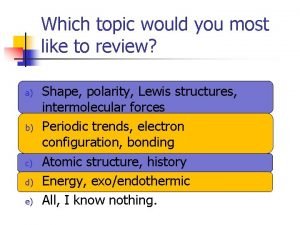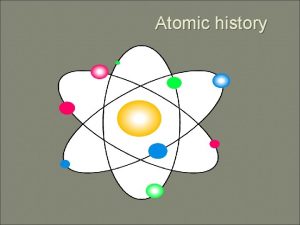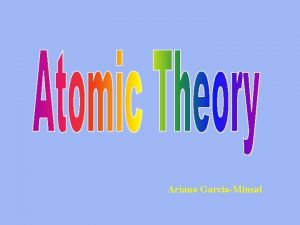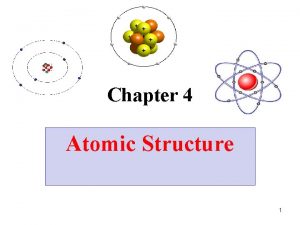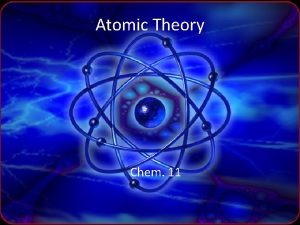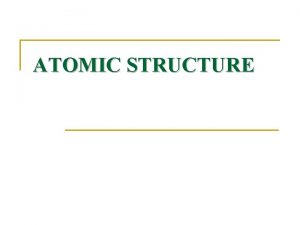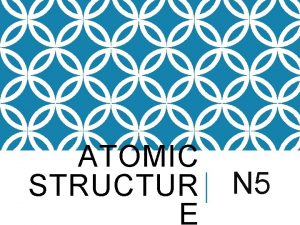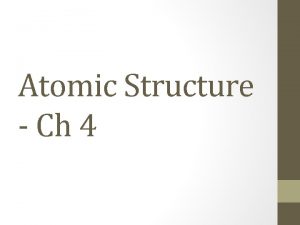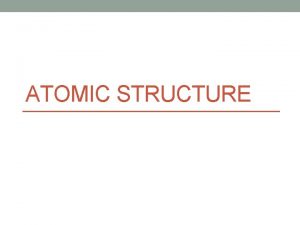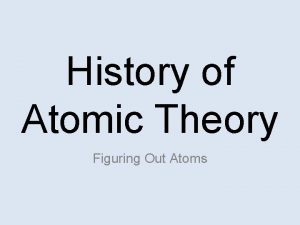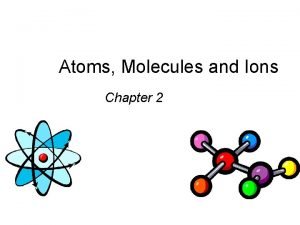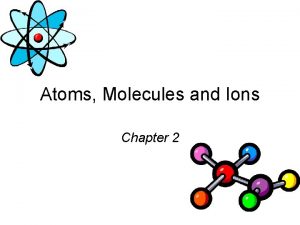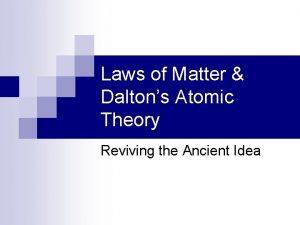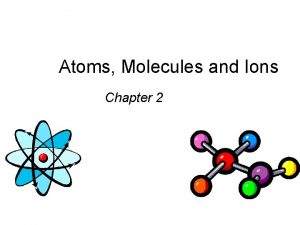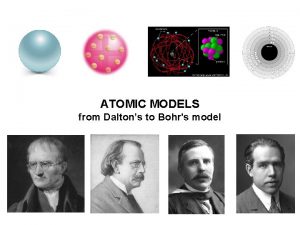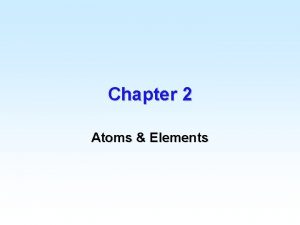Atomic history Daltons Atomic Theory1700 s 1 2


















- Slides: 18

Atomic history

Dalton’s Atomic Theory/1700 s 1. . 2. . 3. . 4. .

Discovery of the Electron In 1897, J. J. Thomson used a ______ to deduce the presence of a negatively charged particle: the_____ http: //www. youtube. com/watch? v=O 9 Goyscbazk&feature=related

JJ Thompson’s Idea He knew that the atom contained + and – charges. The atom was like “________” Electrons scattered in a cloud of positively charged matter

Mass of the Electron Mass of the electron is 9. 11 x 10 -28 g The oil drop apparatus 1916 – Robert Millikan determines the mass of the electron: 1/1840 the mass of a hydrogen atom; has one unit of negative charge

Conclusions from the Study of the Electron: a) Cathode rays have ________ regardless of the element used to produce them. All elements must contain identically charged electrons. b) Atoms are neutral, so there must be ________in the atom to balance the negative charge of the electrons c) _____________that atoms must contain other particles that account for most of the mass

Ernest Rutherford’s Gold Foil Experiment - 1911 _________are helium nuclei - The alpha particles were fired at a thin sheet of gold foil § Particles that hit on the detecting screen (film) are recorded §

Rutherford’s Experiment Gold Foil n Shot a particles at gold. n Most pass through. n Very few deflected n ________we re scientists who worked under Rutherford to carry out the experiment

Rutherford’s Findings Most of the particles passed right through § A few particles were deflected § VERY FEW were greatly deflected § Conclusions: a) The nucleus is _____ b) The nucleus is _____ c) The nucleus is _____ charged

James Chadwick Studied the mass of the nucleus of the atom and realized there is more mass than number of protons. n The _____ accounted for the extra mass. n It was so hard to find because it is _______ and in the _____. n

The Bohr Model n n n Studied the light emitted from atoms when excited by electricity Spectroscopy Add Energy – electrons jump up to a higher level. Remove Energy – electrons fall back to lower level.


Niels Bohr 1913 • Electrons exist on _____. • Like planets orbiting the sun • Each orbit only contains a set number of electrons. • Each orbit possessed a given ________.

Bohr’s Atom electrons in orbits nucleus

The electron cloud n n The area in space surrounding the nucleus that has a high ______ of holding an electron. ______ __ developed the cloud model.

Schrodinger’s Modern Model of the Atom n n n Atom still has a positive nucleus. Electron location based on probability. Created cloud shapes to show the most probable location of an electron.

HELIUM ATOM Shell proton + electron N N + - neutron

ATOMIC STRUCTURE Particle proton neutron electron Charge Mass
 Daltons gas law
Daltons gas law Dalton's gas law
Dalton's gas law Efnisheimurinn svör kafli 2
Efnisheimurinn svör kafli 2 John dalton matter
John dalton matter Daltons experiment
Daltons experiment Is atomic mass and relative atomic mass the same
Is atomic mass and relative atomic mass the same What are the trends in periodic table
What are the trends in periodic table Atomic radius periodic table
Atomic radius periodic table Is atomic mass and relative atomic mass the same
Is atomic mass and relative atomic mass the same Difference between atomic mass and atomic number
Difference between atomic mass and atomic number Atomic number vs atomic radius
Atomic number vs atomic radius L
L 1930 modern atom teorisi
1930 modern atom teorisi Plum pudding model
Plum pudding model Nebulizer in aas
Nebulizer in aas Atomic history webquest
Atomic history webquest Also history physical
Also history physical Element number 70
Element number 70 Smallest atomic radius
Smallest atomic radius
